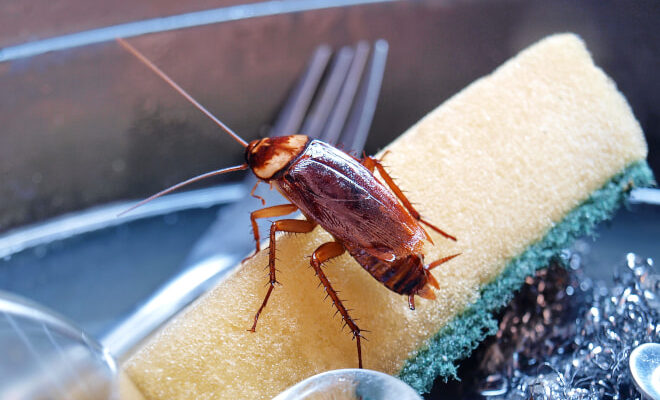Most homeowners do not think of their kitchen appliances as a potential hotspot for unwanted guests. Your clean, efficient dishwasher could be sheltering a number of pests right under your nose. The warm and humid environment, together with food particles, makes it attractive to insects and rodents searching for shelter and food. Kitchen appliances comprise nearly 30 percent of all indoor pest infestations in American homes.
Conducting routine maintenance and cleaning is the best way to avoid these issues, but sometimes, you need Exterminator Services when there are pests growing colonies in your appliances. The first step to preventing these problems and maintaining a hygienically clean kitchen is, of course, understanding why pests are attracted to your dishwasher in the first place.
What Causes Dishwasher To Attract Pests?
Your dishwasher gives pests everything they need to live: moisture, warmth, food, and shelter. The moist interior sets up ideal humidity for insects such as cockroaches and ants, and the warm environment (due to normal hot water cycles) provides perfect breeding temperatures around the year. Food trapped in filters, spray arms and door gaskets provide a steady source of food even in spick-and-span dishwashers. Even trace amounts of food residue—1 mg would do—can feed multiple cockroaches for days.
The dark, undisturbed areas below and behind dishwashers also offer good hiding places out of human traffic. The plumbing connections provide access for outside pests or those from other locations in your home, with the pipes serving as highway pathways directly to your appliance. All dishwashers retain residual moisture between cycles, which can become a stable moisture source that is especially hot during dry seasons when pests are seeking water.
How to Protect Your Dishwasher From Pests?
-
Routine Cleaning and Maintenance
Your dishwater needs to be cleaned at least once a month. Take out and rinse the filter, wipe down any door seals, and clean the spray arms where food residues build up. To kill grease buildups and odors that attract pests, run an empty cycle with white vinegar. The regular maintenance of a dishwasher has been shown to decrease pest attraction by as much as 75%.
Pay particular attention to the rubber gasket lining the door, where bits of food and moisture accumulate. Clean the exterior and beneath and behind the appliance, where crumbs and spills create feeding opportunities.
-
Food Waste Management
Thoroughly scrape plates before putting them in the dishwasher. And even with the food grinders found in modern dishwashers, food waste in excess can clog systems and provide a feeding ground for pests. Empty the dishwasher right after the cycles are done; water sitting in the machine becomes more and more appealing to pests as time goes on.
-
Seal Entry Points
Check the area where pipes enter walls and seal any openings with caulking or steel wool. Look for cracks in nearby cabinetry or walls where pests can find entry. Installing door sweeps and weather stripping on exterior doors to keep pests out of your house in the first place is another prevention measure to consider.
-
Regularly Inspect Your Dishwasher
Get a flashlight and periodically check dark corners and underneath your dishwasher for signs of pest activity, including droppings, egg casings, and live bugs. To prevent issues from growing, use the quickest diagnosis — early intervention.
Get In Touch With Pest Control
While preventative measures can minimize the chances of infestations, established pest problems usually need a professional approach. However, if you still see signs of pests despite every effort, it is advisable to reach out to qualified pest control services. Professionals are equipped with tools, knowledge, and access to treatments, which allows them to target and eliminate infestations at their source.
Expert pest controllers can work out comprehensive treatment strategies to suit your exact circumstance, such as hard-to-reach regions throughout and surrounding devices. They can also provide valuable recommendations on the prevention of future infestations that are specific to your home’s unique layout and any potential vulnerabilities.




